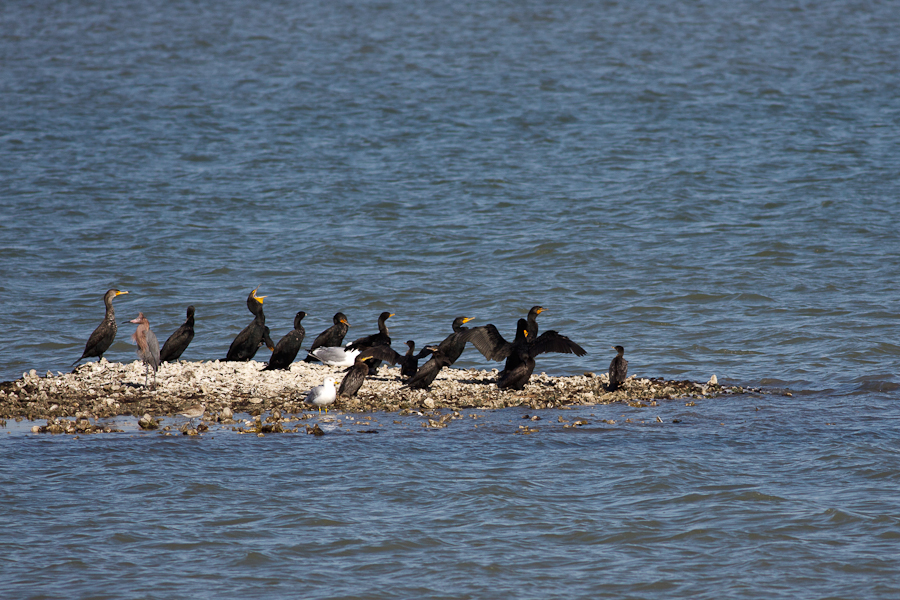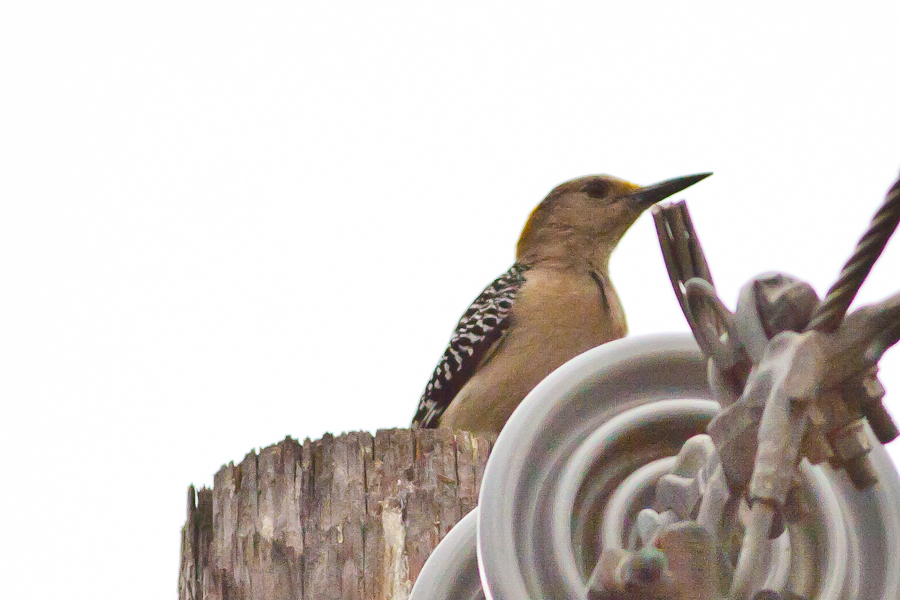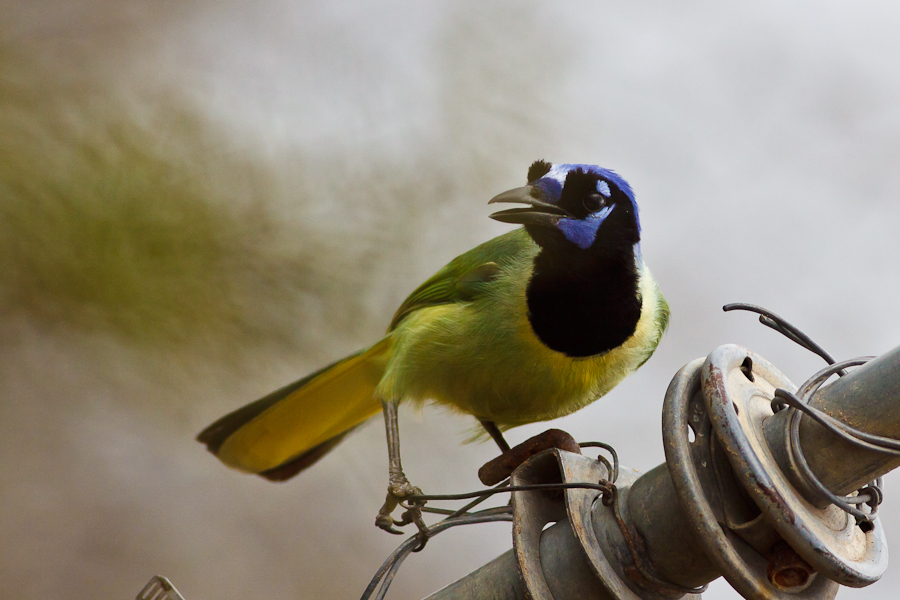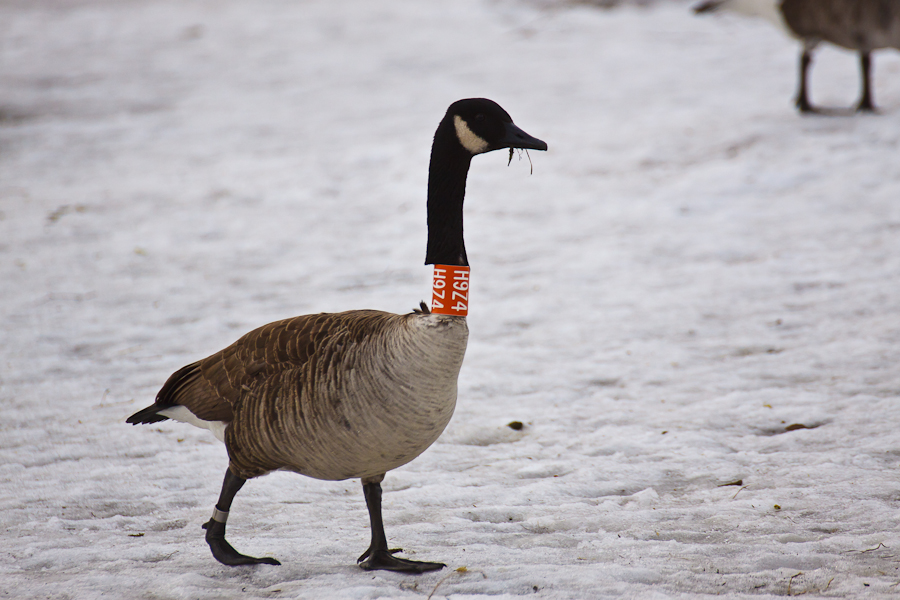#523-#525 on a Boat
Friday, February 25th, 2011Friday I got up bright and early for the real highlight of the trip: a boat ride through the Aransas National Wildlife Refuge to to find Whopping Cranes. When I awoke Port A. was covered in fog, and driving to the dock was a little tricky. (I got lost twice.) By the time I found it, the fog was still pretty thick. I could see a raptor on top of a nearby telephone pole, but could at best guess it was some kind of Buteo, probably a Red-tailed Hawk but I’m not sure. Similarly I could only guess that the cormorant across the harbor was a Double-crested.
I noticed some of my fellow passengers had tripods and scopes. I’ve never brought a tripod on a boat before, but after checking with them, they seemed to think it would be possible to use, so I grabbed mine out of the rental car. Fortunately I hadn’t left it in my hotel room.
We traveled for quite while before the fog burned off, but once it did we started seeing birds, mostly gulls, a few terns, and not much else until we reached the refuge. Once we got there though there started to be some interesting birds on some small sandbars, and on about the third sandbar we passed there were cormorants of two sizes! That meant the smaller ones were Neotropic Cormorants, #523:




